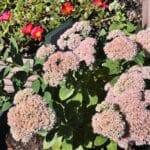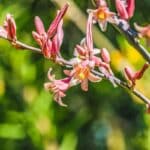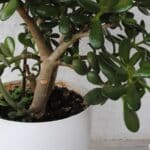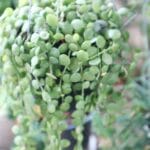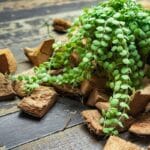Sedum or stonecrop is a group of plants widely known for being resilient outdoor and indoor succulents. Their thick green leaves and stems come in upright, trailing, and branching growth habits that they easily blend with other plants in the landscape or stand on their own when potted.
Some species stand out better than others because of their unique colors just like the Golden Sedum. If you’re looking for a sedum to add vibrancy to your garden or collection, this species is definitely a must-have.
What is Golden Sedum?
Golden Sedum is botanically known as Sedum adolphii, a member of the Crassulaceae family. It is also synonymous with S. nussbaumerianum and another common name is Coppertone stonecrop. It is endemic to the eastern part of Mexico where it is originally found hanging along rocky ravine cliffs and emerging from remnants of lava flows (1).
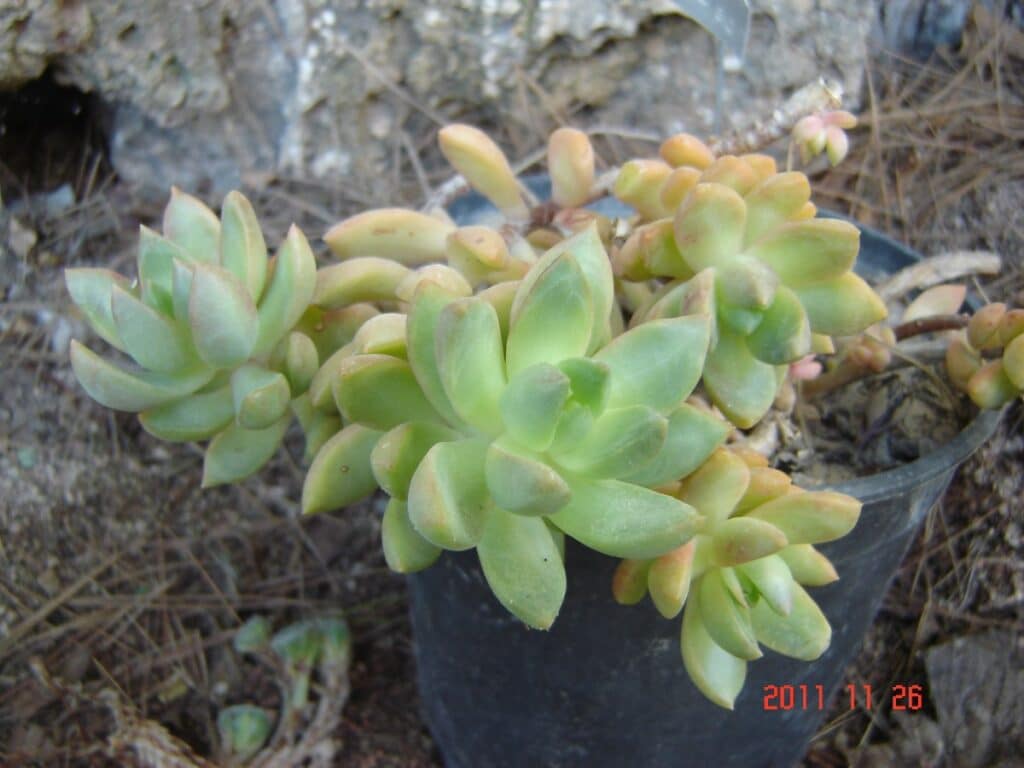
The plant is characterized by its fleshy stem and leaves with an upright growth reaching a height of 15cm. The waxy leaves are arranged alternately along a stalk, widest in the middle, making them floral-looking from the top. They are usually green to yellow-green in partially shaded areas but when exposed to direct sun, the leaves turn golden orange that goes deeper in summer (2).
Golden Sedum can spread up to 60cm wide that’s why it is also used as a ground cover or border, providing a blazing color next to agave and other cool-colored succulents like echeveria and curio in rock gardens. It also makes a good specimen planted individually in decorative pots.
As the plant matures, the stem can turn woody which helps the plant succeed in outdoor conditions. It is a hardy plant recommended in USDA zones 9 to 11.
Does Sedum Adolphii Bloom?
Sedum Adolphi blooms flowers common to all sedum species. During early spring, rounded clusters of star-like flowers emerge on top of green fleshy bracts. They are white in color with pinkish anthers and appear in succession so some are noticeably flourishing while others are fading at the same time (1).
How to Grow and Care for Sedum Adolphii
Light and Water
Like all sedum species, the Golden Sedum should be planted under full sun conditions. The brighter the location, the more fire-like the leaves will look.
Indoors, natural light by the window will do but make sure to rotate the plant once every so often to keep the plant from leaning sideways. It will also benefit from exposure to fluorescent light up to 10 hours a day (3).
The Golden sedum is drought tolerant so it does not need frequent watering. Watering a potted plant can be done every 10 days, thoroughly rather than frequently.
Temperature and Humidity
S. adolphii hails from a tropical origin. So it is not cold hardy and is used to warm and humid conditions. Although it has been cultivated and grows well in different climates, the plant is not frost hardy and may fail below -6°C but it can also overwinter indoors (2).
It is known to bloom from late winter to early spring but flowering may be enhanced by subjecting the plant to cold treatment by keeping them under 10°C (3).
Pests and Diseases
Sedums are fairly pest and disease-resistant but they are still predisposed to the occasional attacks of insects, especially mealybugs. Treat the infestation as early as possible, when only a few insects are observed to keep the plant healthy and avoid contamination of other plants.
Gently wipe the signs with cotton dipped in rubbing alcohol or spray the plant with a water and dishwashing soap solution regularly until the pests are gone.
Propagation and Maintenance
Propagation of sedums is easy and is the same as with most succulents. These beautiful succulent can be propagated using their healthy leaves, stem cuttings, and offshoot division. Any technique is effective and yields new plants within a few months. Just keep in mind that they shouldn’t be watered during the first few weeks to a month to avoid rotting.
Also make sure to allow open wounds to form callus first before inserting the propagules into the soil to better promote root formation. Another key to successful propagation is the use of gritty potting mix that will provide good drainage and root aeration to the plants, especially since sedums, like any succulents, hate standing water.
See more: How to plant succulent cuttings
Golden Sedum Cultivars and Varieties You Can Grow
‘Golden Glow’
This Golden Sedum is one of the popular ones, showcasing leaves with yellow-green base and orange to pink tips.
‘Orange Delight’
The rather elongated leaves of this sedum are green to yellow-green from the stem and blushes orange towards the tips.
‘Firestorm’
Another popular cultivar, the long bright green leaves are made more interesting by the hints of orange along the margins. This coloration becomes more intense under bright full sunlight.
‘Lime Gold’
As the name suggests, the leaves are lime green in color with a tinge of golden yellow at the ends.
‘Green’
S. adolphii attracts because of the golden to copper color of the leaves but this regular but rich green variety can still make a difference when grown en masse, particularly as borders in landscapes.
FAQs
Does golden sedum need full sun?
Yes, golden sedum (Sedum adolphii) thrives best in full sun to partial shade. Providing ample sunlight enhances its vibrant golden-yellow foliage and promotes a healthy, compact growth habit.
Does golden sedum spread?
Yes, golden sedum (Sedum adolphii) is known for its spreading habit. It produces trailing stems that can root along the ground, allowing the plant to form dense mats or ground covers over time.
What soil for golden sedum indoors?
Golden sedum (Sedum adolphii) thrives indoors in well draining soil. The soil should provide good aeration and allow excess water to drain easily, preventing waterlogged conditions for optimal growth.
If you love succulents, check this list of common succulent types you can grow.
References
Reference list
(1) Basañez, M., et. al. Sedum adolphii, Carl Albert Purpus, and the Sulphur Spring Mystery. Cactus and Succulent Journal. 2010. P. 5-9.
(2) Horvath, B. The Plant Lover’s Guide to Sedums. Timber Press. 2014. P. 232.
(3) Alani, N. Propagation of Sedum adolphii In vitro. Iraqi Academic Scientific Journals. V. 22. 2009. P. 2.
Close
*A special thanks to Francisco Pomares ELDA for allowing us using the photo!

